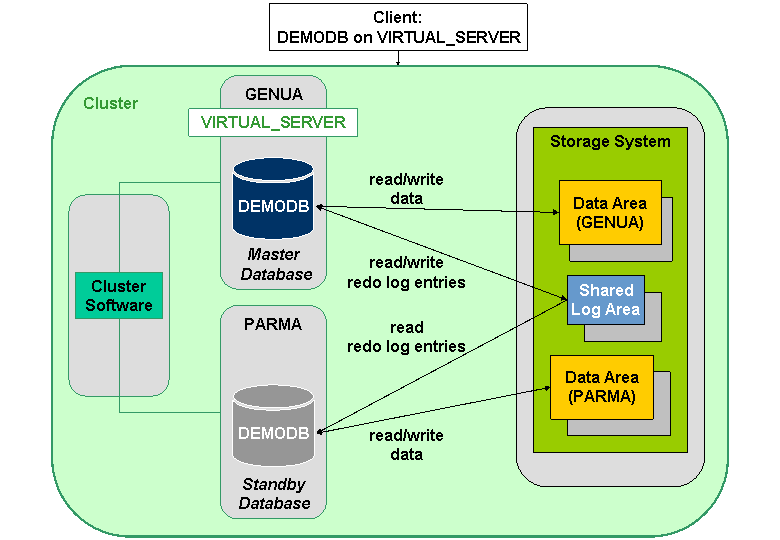 Architecture of a Hot Standby System
Architecture of a Hot Standby System 
A hot standby system consists of a master and one or more standby databases, which can be located on different computers. The master and standby databases each have their own kernel, working memory areas, SAP MaxDB X Server, DBM Server and so on.
The computers on which the databases are located constitute a cluster. Communication within the cluster is done by way of the internal IP addresses of the computers. Outwardly, the hot standby system behaves like a single database. To access the hot standby system externally, you need the following information:
Database name
Virtual Server Name (identifies the computer that currently has the role of master database)
If the master database breaks down, the Virtual Server Name transfers to the computer with the standby database, which takes on the master role.
More information: What Happens When the Master Database of a Hot Standby System Fails?
The data and log areas of all databases are located in a storage system. We recommend that you mirror the data and log areas in the storage system.
Master and standby databases use the same log area, although the standby databases only have read access to it.
 Note
Note
In contrast, standby databases have separate log areas for all databases.
More information: Standby Database
Master and standby databases each have separate data areas that are independent of each other.
Example
The following graphic shows a hot standby system consisting of a master database on the computer GENUA and a standby database on the computer PARMA. The computers GENUA and PARMA are part of a cluster. The name of the database is DEMODB, and the virtual server name is VIRTUAL_SERVER. The data and log areas of the databases are located in a storage system, while the cluster software is installed on a separate computer.

Structure of a Hot Standby System (Example)

Hot Standby System: External View (Example)